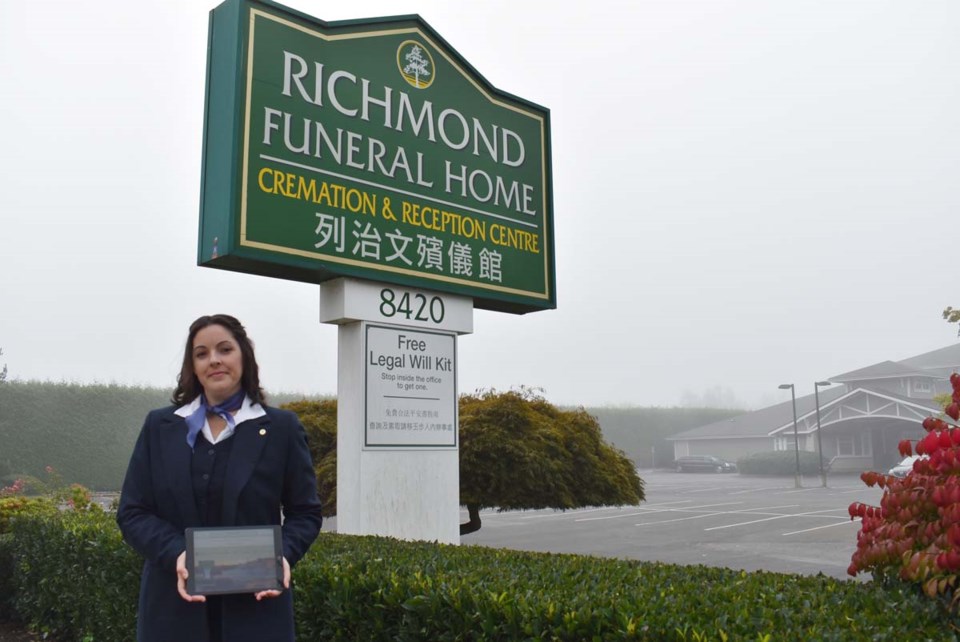It is said that for every negative action, there is a positive outcome.
Case in point, the Richmond Funeral Home which, like most businesses, has had to roll with the COVID-19 punches in order to safely operate during the pandemic.
Unlike some similar end-of-life service providers in Vancouver - which have reported a downturn in business since the pandemic started, possibly due to people in care homes being wrapped in a bubble – Richmond Funeral Home said nothing much has changed.
The one aspect of their business that has, however, changed dramatically since March is the ability for their funeral services to reach more family and friends around the globe than ever before.
COVID-19 guidelines restricts the number of people allowed at a funeral to 50, up from 10 in the first few months of the pandemic.
But with the likes of Richmond Funeral – on Cambie Road, between No. 3 and Garden City roads – now live-streaming services from the crematorium to the graveside, few loved ones are missing out.
“At the beginning (of the pandemic), a maximum of 10 people at a service was challenging for everyone,” Erin MacPherson, Richmond Funeral’s managing director, told the Richmond News.

“But that’s when live-streaming became so instrumental for so many families. Families aren’t able to travel, so we were able to reach them.”
MacPherson said they didn’t offer live-streaming before the pandemic hit, meaning some loved ones often missed out for various reasons on saying a final goodbye.
“As well as those now able to take part in the service online, there is also the people who want to remain in the safety of their home just now,” added MacPherson, who’s been at the helm at Richmond Funeral for a decade.
“We’re able to bring them into the services. It’s very much a positive from a negative.”
MacPherson said Richmond Funeral’s large, covered outdoor space also allows them to socially distance and extend their opening hours to allow for staggering and extensive cleaning.
She described how Richmond Funeral’s owners, Arbor Memorial, already had a pandemic plan in place, prior to COVID-19, and was able to quickly pivot to the current operating model.
MacPherson noted that, in the early days of the pandemic, some people were postponing services for their loved ones, hoping the restrictions would pass.
But with it becoming apparent in late spring and summer that the virus wasn’t going away, people started calling back to continue with their plans.
People were postponing at the beginning of the pandemic. But now that everyone is realizing this is not going away, they are calling back and making arrangements.



